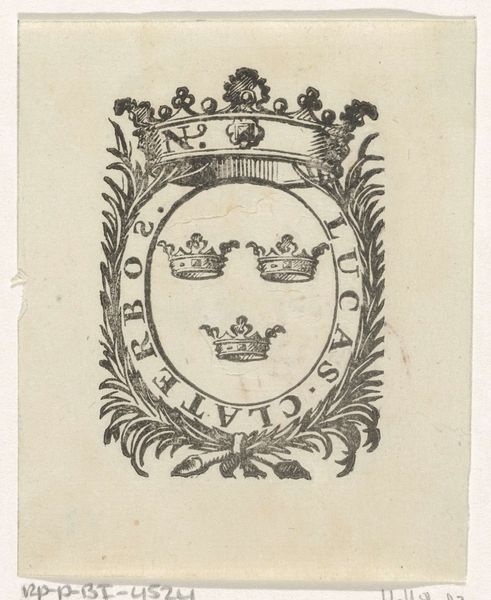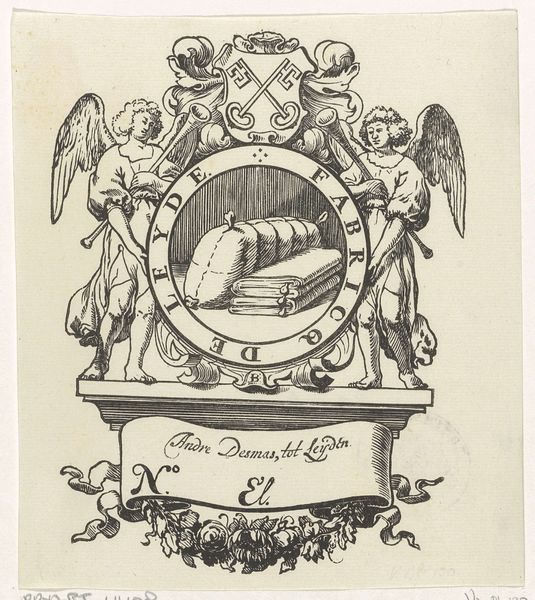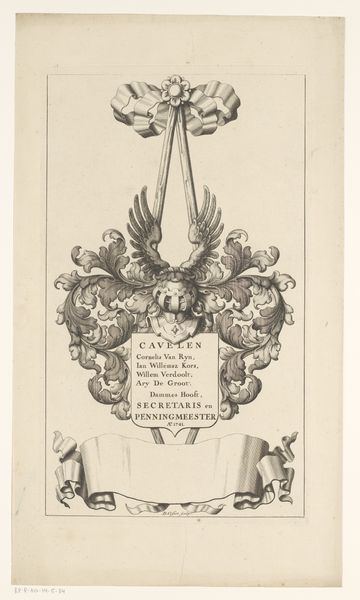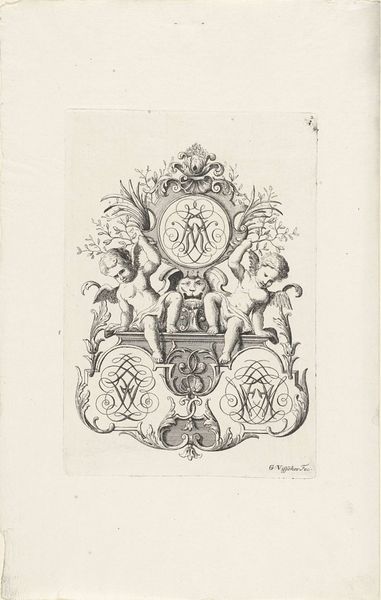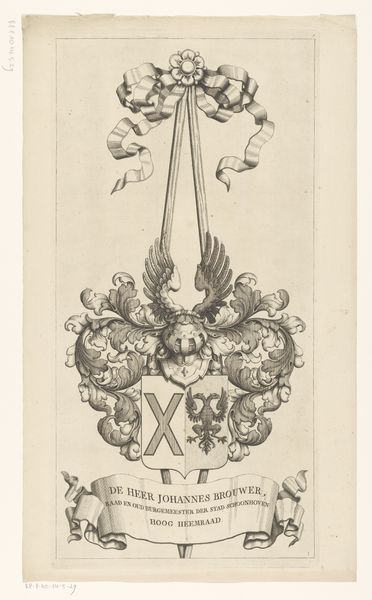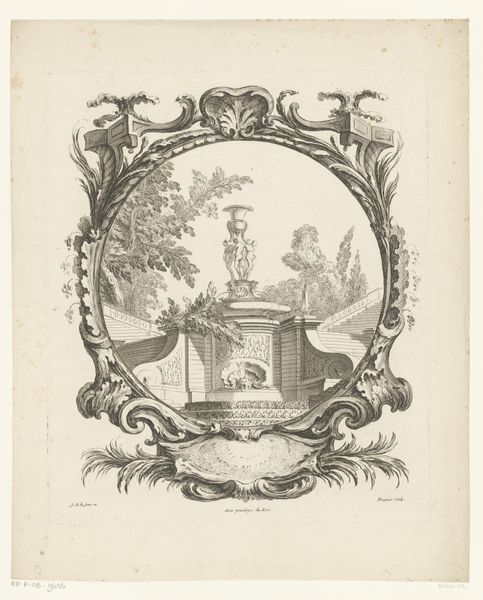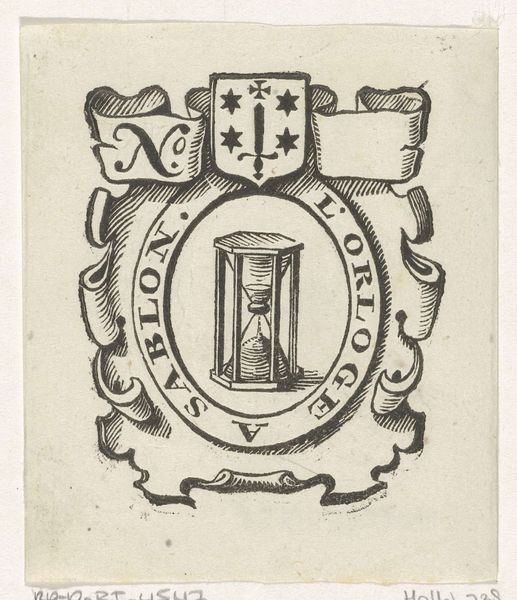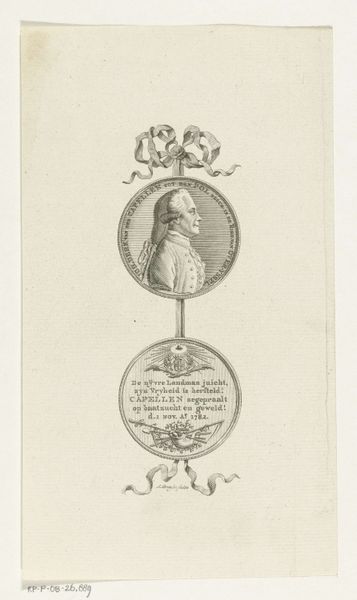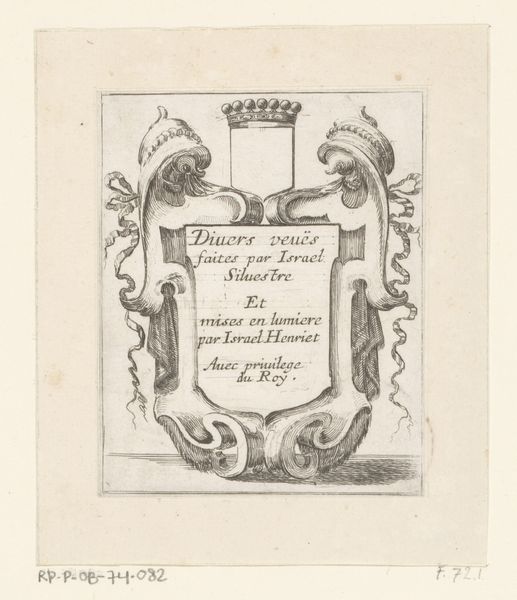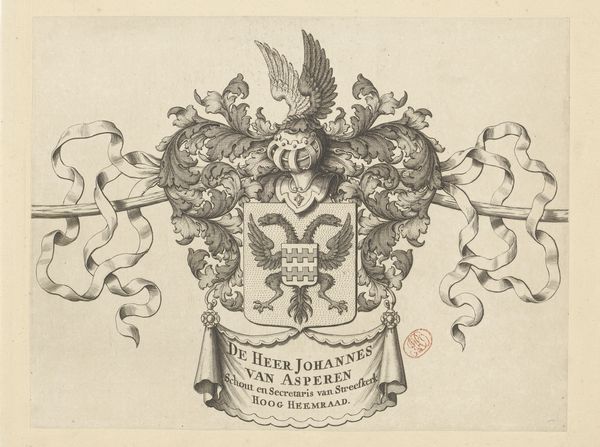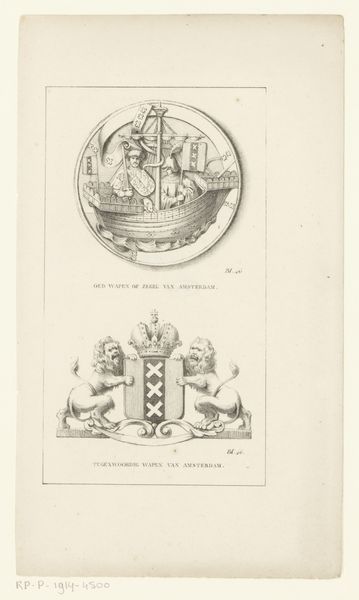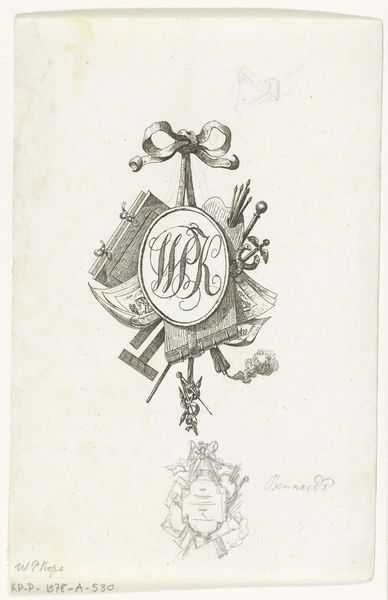
Zuil met wapenschilden en schildersmaterialen en banderol 1744
0:00
0:00
Dimensions: height 173 mm, width 149 mm
Copyright: Rijks Museum: Open Domain
Curator: This finely detailed print from 1744, residing here at the Rijksmuseum, is entitled "Zuil met wapenschilden en schildersmaterialen en banderol," attributed to François van Bleyswijck. What strikes you first about this historical tableau? Editor: The precision of line is remarkable! The tight, controlled hatching gives such sculptural form to the heraldic shield and column at its heart, rendered entirely in black and white—stark but quite powerful. Curator: Precisely. The print's symbolism connects us to a Baroque visual language, speaking to artistic identity and civic pride. Consider the column, often an emblem of strength and steadfastness, here adorned with painting tools. Editor: It anchors the design visually, allowing those intricate surrounding details to breathe. What I notice is the symmetrical composition; a balance that is crucial to understanding this historical form, and how that era approached its artistic creation. Curator: The inscriptions, you see, celebrate the art of painting itself, all framed within the timeless garland of laurel, speaking of victory and eternal remembrance, tying it directly to historical context of painter guilds from this time. Note also the shields atop the columns and embedded in the design, the shields hold the keys to social context in 1744. Editor: Fascinating. I also note how the use of white space becomes as important as the lines. The stark negative areas enhance the detail by contrast—almost like it's carved in relief. Curator: The effect reinforces the symbolic gravity. And for me, this image carries forward echoes of Dutch Golden Age certainties around status and skill, as demonstrated via imagery and presentation. It creates continuity across time and place, echoing the importance of trade across these Northern communities. Editor: Seeing it broken down, the framework allows one to approach its core in an almost mathematical way, it holds the same conceptual underpinnings of structuralism in language: form determines function and overall message. Curator: Considering these intertwining layers of design and history reveals not just what's depicted, but the enduring ideas which persist, like the continuous laurel leaves themselves. Editor: A striking image when broken into smaller components and understood across eras.
Comments
No comments
Be the first to comment and join the conversation on the ultimate creative platform.


